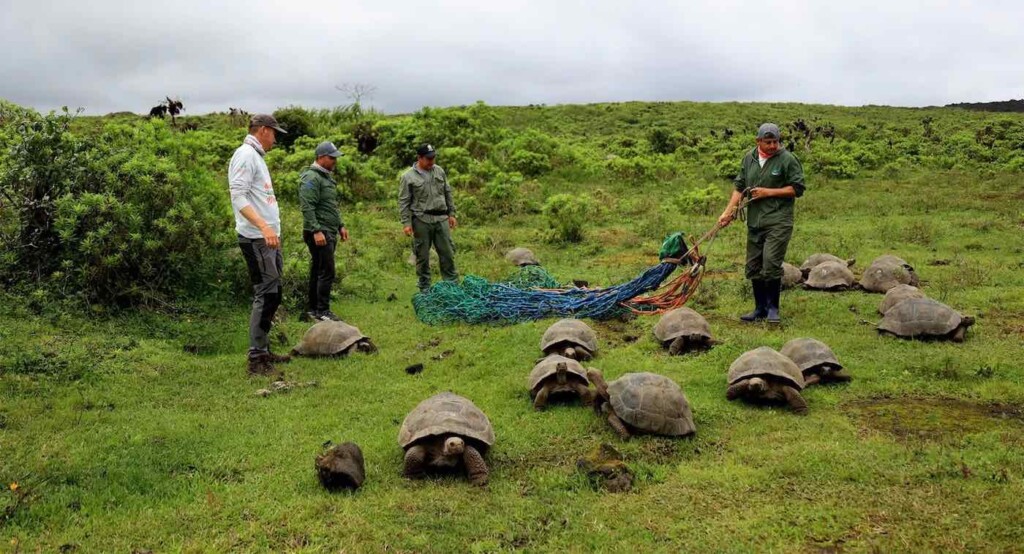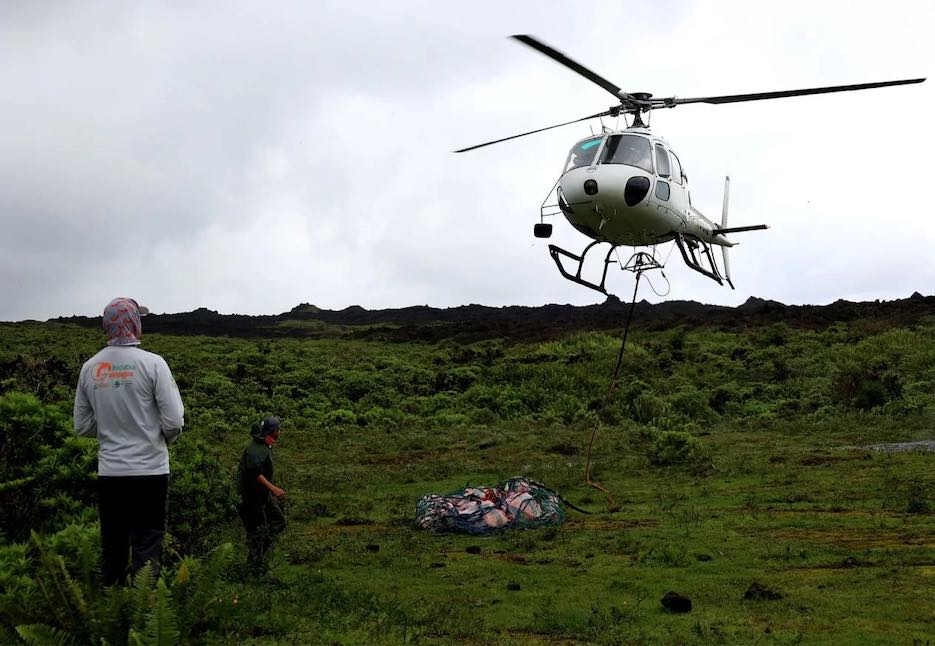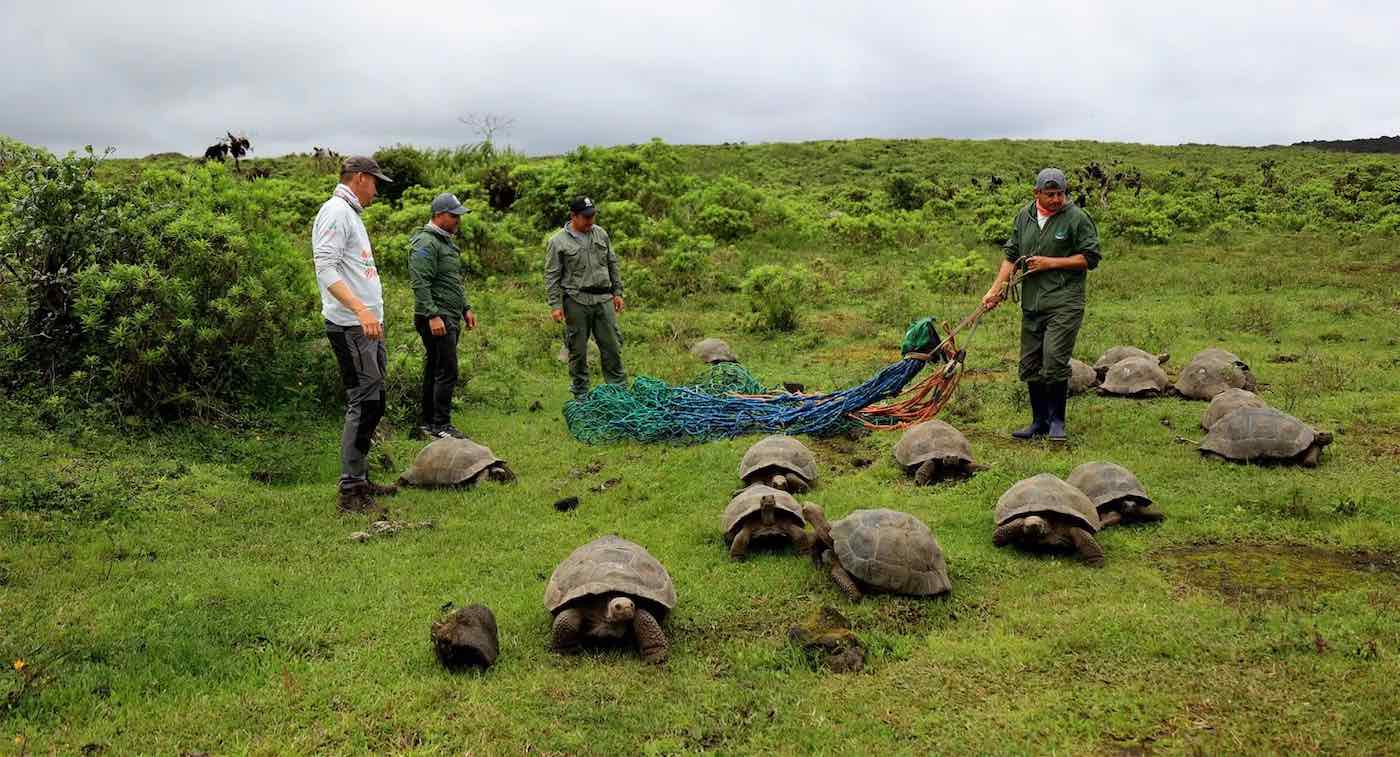
The Galapagos Conservancy successfully airlifted 136 juvenile tortoises to the volcanic terrain on Isabela Island, their only natural habitat on Earth.
The giant Galápagos tortoises between the ages of 5 and 9 years were hatched and raised at the Breeding and Rearing Center on the island, where dedicated park rangers ensured their well-being and development from birth.
They were safely moved via helicopter, which is a crucial new tool for repatriating this species.
Without the helicopter support, paid for by public donations, the only alternative would be to transport them by sea and then carry them on shoulders across several miles of lava fields and challenging terrain that would take a long time and multiple expeditions.
The 136 animals all grew up healthy and were ready to take the exciting journey back to their homeland, where they now can enjoy a lifetime in their natural state, living over 100 years on average.
After being quarantined, dewormed, analyzed for health, and microchip marked for identification, the tortoises were flown to their destination in the picturesque south of Isabela Island “under strict safety standards”.

These Galápagos projects play a crucial role in restoring the ecological balance of the Ecuadoran island chain in South America. Tortoises are primary herbivores that actively participate in shaping the landscape and dispersing seeds. These are crucial factors in maintaining ecosystem stability.
Successfully rehoming this new group of 136 juvenile turtles by helicopter marks “a crucial milestone in our conservation mission in Galápagos,” said Dr. Jorge Carrión, the Director of Conservation at the Galapagos Conservancy.
Another crucial milestone reached by the Galápagos National Park two years ago saw their rodent eradication program completed on two Galapagos Islands—with conservationists excitedly declaring the lands rat-free. Now, native biodiversity can return to normal in those ecosystems of Seymour Norte and Mosquera islands.
SHARE THE GREAT News With Turtle-Lovers on Social Media…




















